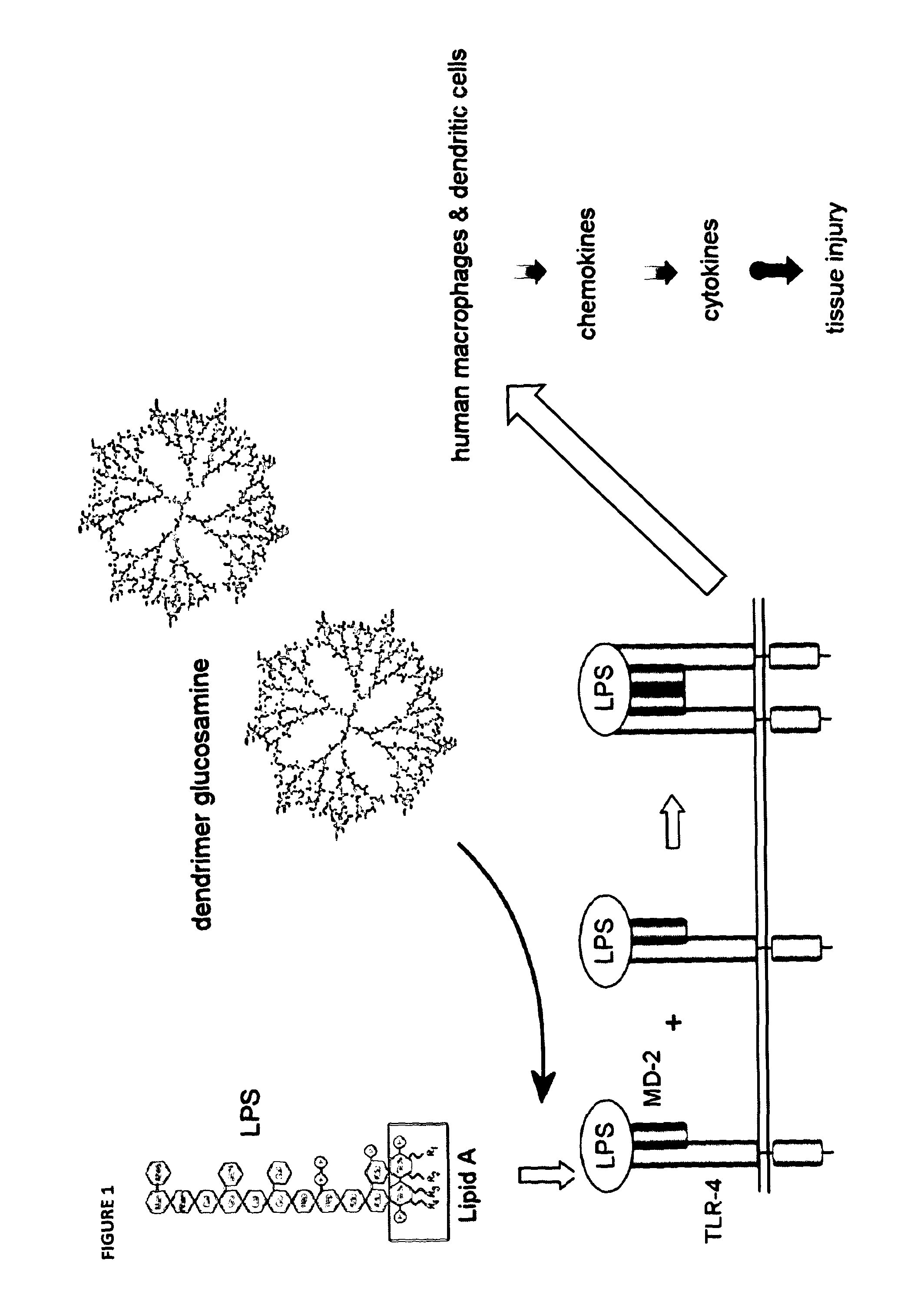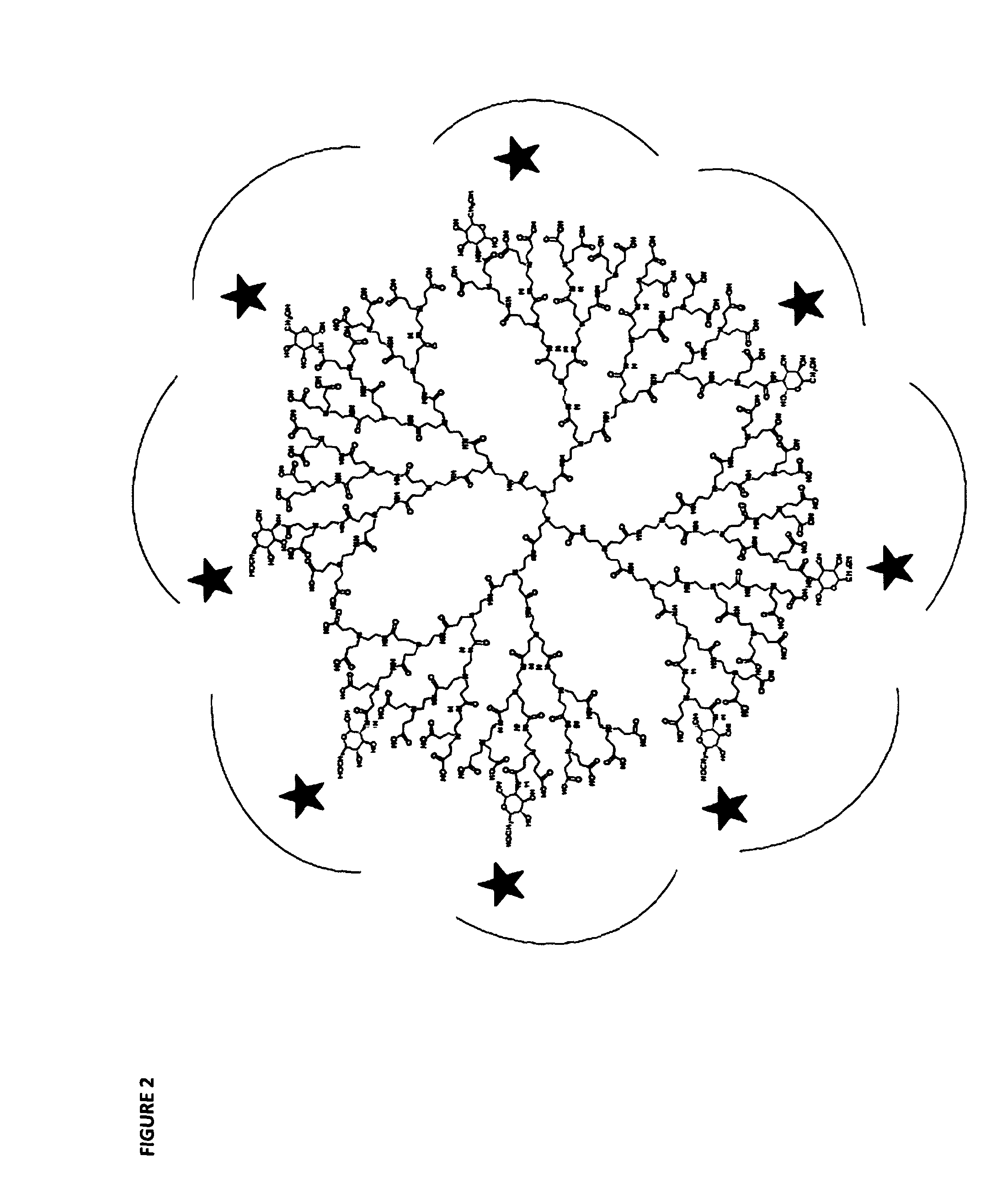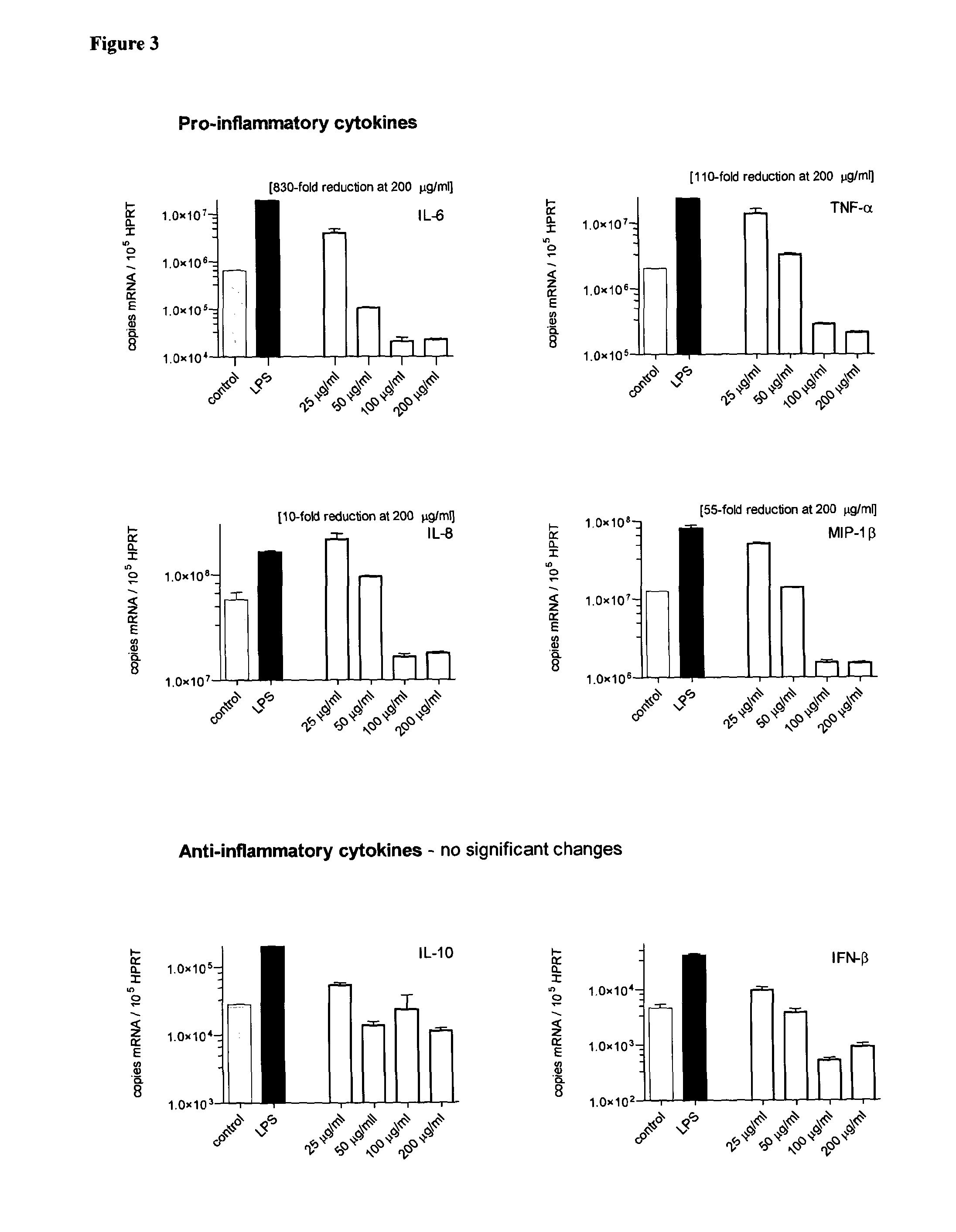Glycodendrimers of polypropyletherimine
a polypropyletherimine and glycodendrimer technology, applied in the direction of esterified saccharide compounds, drug compositions, immunological disorders, etc., can solve the problems of structural heterogeneity of macromolecules used, impede the use of linear polymers, and the success of linear polymers is much less than anticipated
- Summary
- Abstract
- Description
- Claims
- Application Information
AI Technical Summary
Benefits of technology
Problems solved by technology
Method used
Image
Examples
example 1
Studies of Generation 3 Polypropyletherimine Carboxylic Acid Terminated Dendrimer Glucosamine
example 1a
Synthesis 9
[0306]Despite the molecular modelling studies showing that the generation 3 polypropyletherimine carboxylic acid terminated dendrimer glucosamine (12.5% loading) would not be biologically active, we nevertheless proceeded with its chemical synthesis and its biological testing. Divergent synthesis of a generation 3 carboxylic acid terminated polypropyletherimine dendrimer has been previously described by Krishna T R & Jayaraman N. Synthesis of poly(propyl ether imine) dendrimers and evaluation of their cytotoxic properties. J. Organic Chemistry 2003; 68(25): 9694-9704.
[0307]50 mg of a monodispersed generation 3 polypropyletherimine dendrimer (MWt 2,667) was dissolved in 0.5 ml water. 50 mg of glucosamine was dissolved in 1 mg / ml water, added to the dendrimer, and the pH adjusted to pH 5. EDC (208 mg) was dissolved in 4.1 ml of water and added to the mixture, and the pH adjusted to 5.0. The reaction was stirred for 3 h at room temperature with constant monitoring of the pH ...
example 1b
[0309]To prepare endotoxin-free solutions and glassware, all glassware and magnetic fleas were autoclaved twice at 123° C. for 15 minutes. The synthesis was performed using sterile and endotoxin free disposable plastic tissue culture grade 50 ml universal tubes. All other disposable plastic pipettes, universals and syringes are certified endotoxin-free (i.e., endotoxin <0.01 endotoxin units (EU) / ml). Endotoxin free water for injection was used. This means that endotoxin contamination was reduced to a minimum from the very start of the partial glycosylation synthesis reaction. In order to eliminate any bacterial contamination of the pH probe used, it was first immersed in 1 N HCl solution for 15 minutes before being used, and then washed 4 times with endotoxin free water to remove any residual acid.
[0310]150 mg of the Generation 3 polypropyletherimine dendrimer was dissolved in 1.5 ml sterile endotoxin free water to give a concentration of 100 mg / ml. A magnetic fle...
PUM
| Property | Measurement | Unit |
|---|---|---|
| distance | aaaaa | aaaaa |
| thickness | aaaaa | aaaaa |
| thickness | aaaaa | aaaaa |
Abstract
Description
Claims
Application Information
 Login to View More
Login to View More - R&D
- Intellectual Property
- Life Sciences
- Materials
- Tech Scout
- Unparalleled Data Quality
- Higher Quality Content
- 60% Fewer Hallucinations
Browse by: Latest US Patents, China's latest patents, Technical Efficacy Thesaurus, Application Domain, Technology Topic, Popular Technical Reports.
© 2025 PatSnap. All rights reserved.Legal|Privacy policy|Modern Slavery Act Transparency Statement|Sitemap|About US| Contact US: help@patsnap.com



